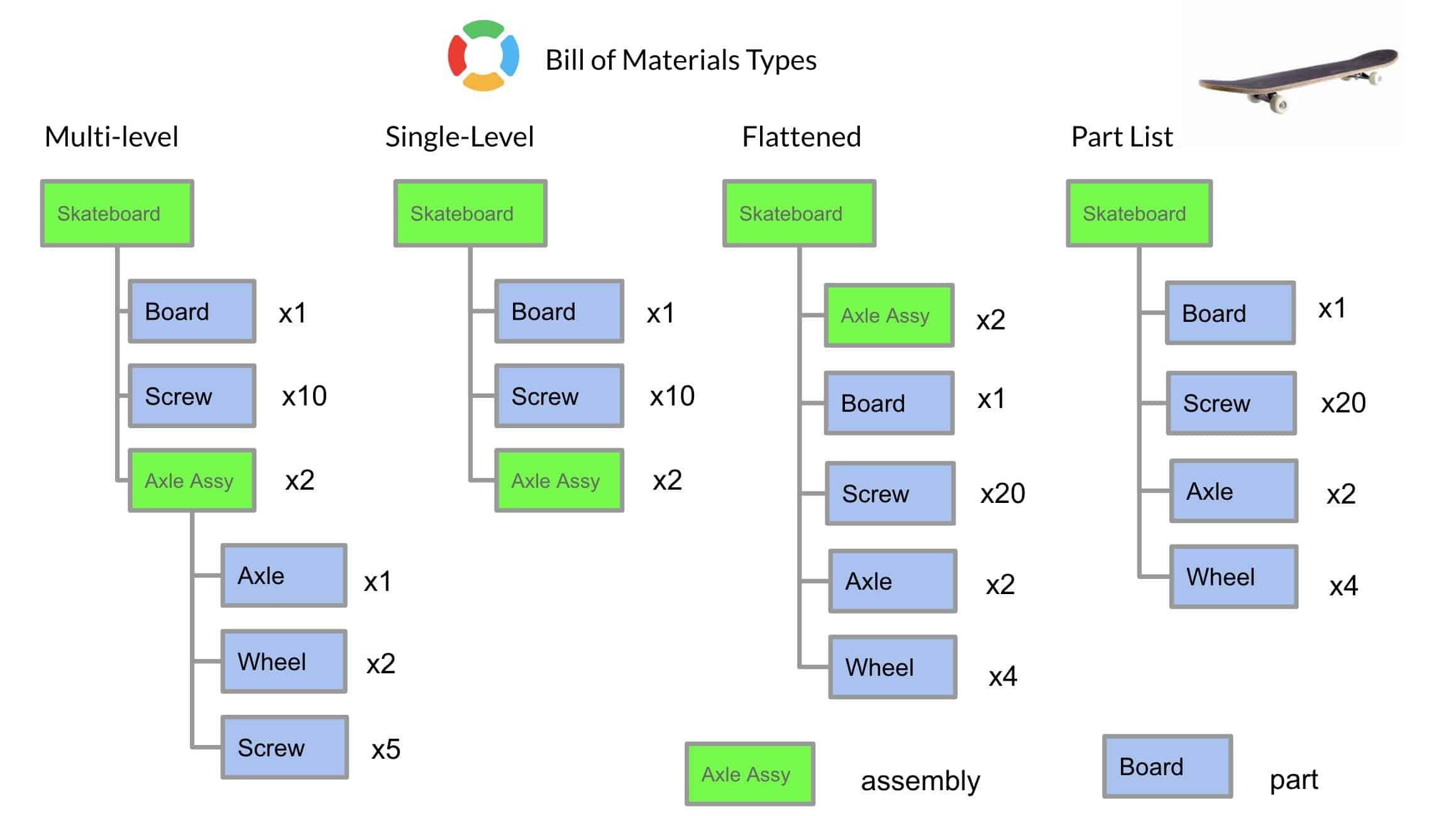
Going back to basics in today’s webinar and talk about the fundamental things – BOM types. Often there are tons of confusion around BOM types – EBOM, MBOM, XBOM, SBOM… you name it. We don’t talk about them today. We will do it later.
Today, we talk about 4 fundamental types of Bill of Materials
1- Single level BOM.
This is the basic and the simplest BOM – list of parts. No structure. Think about the list of components you need to build a product. Usually, the most commonly used because of its natural simplicity.
2- Multi-level BOM (indented BOM).
This BOM presents structure and parent-child relationships. This one is a complete structure of components – parts and assemblies. It can be two types – quantity-based and instance-based. Quantity based means no part can be present multiple times in the same level. So, an instance is not identified – only quantity. Instance BOM allows to every single part instance to be represented in the BOM
3- Part List.
A flat list with a list of all parts and corresponding quantities. It is a quantity summary.
4- Flattened BOM.
A quantity-based rollup built from a specific top-level BOM. Flattened BOM contains both assemblies and parts, but very much similar to the part list that contains only parts.
Check the video from the webinar
And this is a slide deck.
Conclusion.
The information about the product can be presented in various forms. BOM types cover fundamental options – single-level BOM, multi-level BOM, flattened BOM and part list. Knowing these BOM types you can feel very comfortable speaking about different product structures.
In the next webinar, we will talk about configured BOMs, Resolved BOMs and Views.
Register for OpenBOM user subscription later today
Best, Oleg @ openbom dot com.
Let’s get to know each other better. If you live in the Greater Boston area, I invite you for a coffee together (coffee is on me). If not nearby, let’s have a virtual coffee session — I will figure out how to send you a real coffee.
Want to learn more about PLM? Check out my Beyond PLM blog and PLM Book website
Read OpenBOM customer reviews on G2 Crowd to learn what customers are saying about OpenBOM.
Join our newsletter to receive a weekly portion of news, articles, and tips about OpenBOM and our community.









